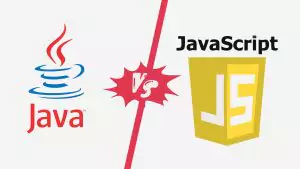Java, a widely-used programming language, is known for its versatility and comprehensive syntax. One of its many features is type casting, a process that facilitates the transformation of variables from one data type to another. Type casting is often utilized in programming to enable, manage, or optimize code functionality. This article delves into the core of Java type casting, including its types, the primitive data types involved, examples of its usage, and its impact on output.
Understanding Type Casting
At a basic level, type casting involves converting one data type into another. For instance, consider a scenario where you have a float variable, and you need to transform it into an int. This process is called type casting. However, the type casting process in Java is more sophisticated and subdivided into two main categories:
- widening casting
- narrowing casting.
Java’s Primitive Data Types and Casting
Before diving into the details of casting, it’s essential to understand the role of primitive data types in Java. There are eight primitive data types in Java – byte, short, int, long, float, double, boolean, and char. Each of these data types has a unique size and value range. Type casting in Java involves these primitive data types and their conversions.
Widening 7 Narrowing Casting in Java
Widening casting (also known as upcasting) is a process that transforms a smaller data type into a larger one. For example, converting an int into a long or a float is a widening cast. The good news is that Java performs such transformations automatically because no data will be lost during this conversion process. The automatic casting is commonly referred to as implicit casting.
Unlike widening casting, narrowing casting (or downcasting) involves converting a larger primitive data type to a smaller one:
- For example, if you’re turning a
doubleinto anint, that’s narrowing casting. - However, this process is not automatic, like widening casting.
- It must be done manually, and it’s also known as explicit casting because it might result in data loss.
Syntax and Examples of Casting
Java type casting adopts specific syntax rules. For widening casting, no specific syntax is required because the process is automatic. For instance:
int myInt = 9;
double myDouble = myInt; // Automatic casting: int to double
For narrowing casting, the desired type should be wrapped in parentheses. Here’s an example:
double myDouble = 9.78;
int myInt = (int) myDouble; // Manual casting: double to int
The comments in the examples above indicate the output of the casting process.
Limitations and Purpose of Casting in Java
While casting in Java is a powerful feature, it’s not without limitations. For example, narrowing casting might result in data loss because the smaller data type may not accommodate the larger one’s full value range.
Despite this, the purpose of casting is to make Java more versatile and flexible. Casting allows for compatibility between different data types, enabling more complex programming structures. Moreover, casting can be used to optimize memory usage, given that smaller data types use less memory.
Conclusion
In Java, type casting is a significant concept that enhances the versatility and flexibility of the language. The process can be automatic or manual, widening or narrowing, but its ultimate purpose is to enable compatibility between different data types. Although it comes with some limitations, such as potential data loss, careful usage can make casting a robust tool in a developer’s toolkit.
FAQ
How does widening casting work in Java?
Widening casting in Java works by automatically converting a smaller primitive data type to a larger one. This process doesn’t result in data loss, hence Java handles it implicitly.
What is narrowing casting in Java?
Narrowing casting in Java is the process of converting a larger primitive data type to a smaller one. This conversion needs to be done manually because it can result in data loss.
When is automatic casting used in Java?
Automatic casting, also known as widening casting, is used when converting a smaller primitive data type to a larger one. This is because no data loss occurs in the process.
How is manual casting done in Java?
Manual casting in Java is done by using the desired type in parentheses before the variable to be cast. It’s used when narrowing casting, i.e., when converting a larger primitive data type to a smaller one.
What is the purpose of casting in Java?
The purpose of casting in Java is to enable compatibility between different data types. It allows developers to use different data types together in expressions or assignments.
Are there any limitations or restrictions on type casting in Java?
Yes, there are limitations. The most notable one is that narrowing casting can result in data loss because a smaller data type might not accommodate the full value range of a larger data type.
Can casting cause data loss in Java?
Yes, casting can cause data loss in Java, especially during narrowing casting, where a larger primitive data type is converted to a smaller one.
Is casting reversible in Java?
Yes, casting can be reversible in Java, but it depends on the types involved and if there was any data loss during the initial casting.
How does casting affect memory allocation in Java?
Casting affects memory allocation by allowing developers to choose data types that use memory more efficiently. For instance, using a smaller data type consumes less memory, thus optimizing the memory usage.
Follow us on Reddit for more insights and updates.





Comments (0)
Welcome to A*Help comments!
We’re all about debate and discussion at A*Help.
We value the diverse opinions of users, so you may find points of view that you don’t agree with. And that’s cool. However, there are certain things we’re not OK with: attempts to manipulate our data in any way, for example, or the posting of discriminative, offensive, hateful, or disparaging material.